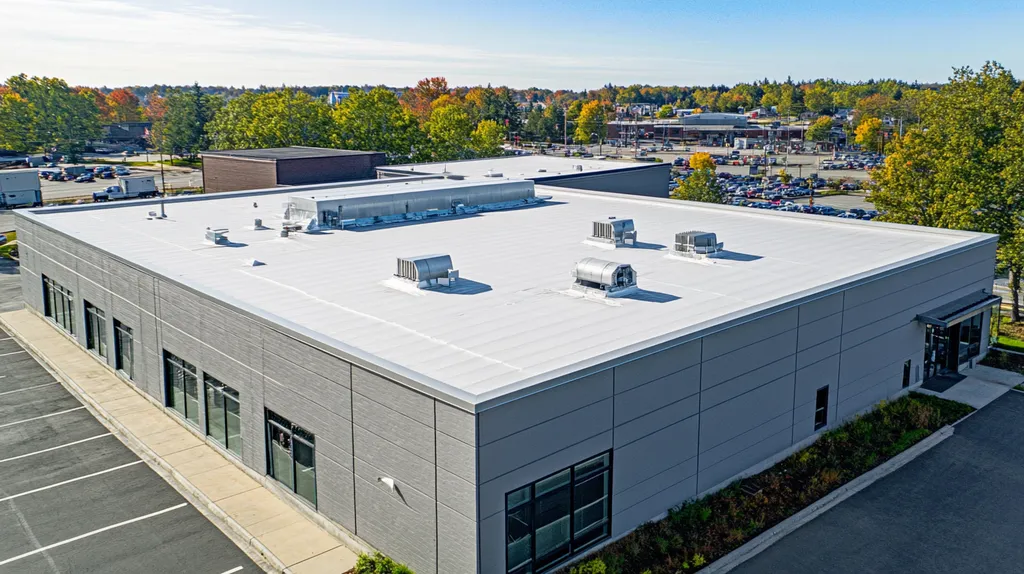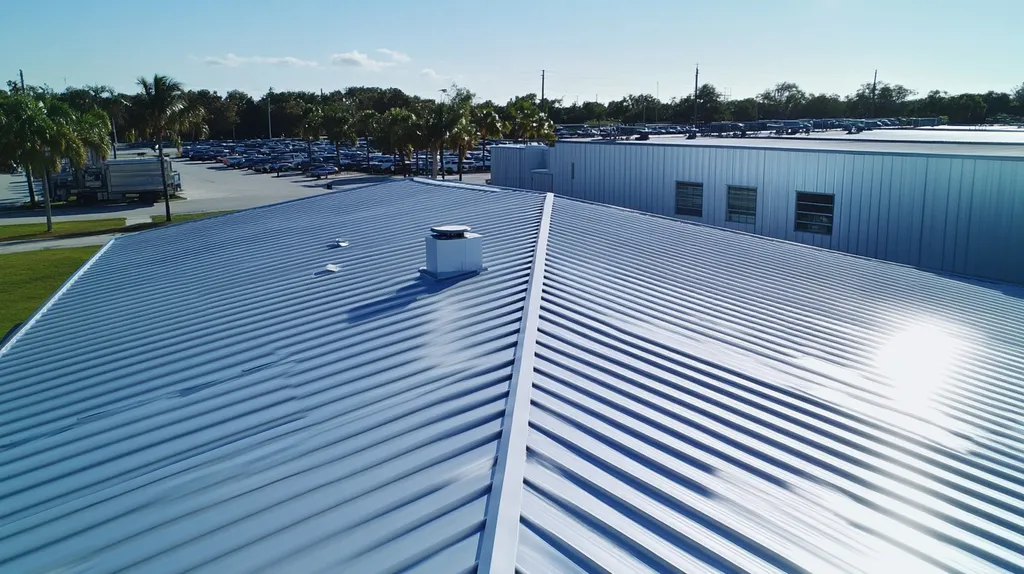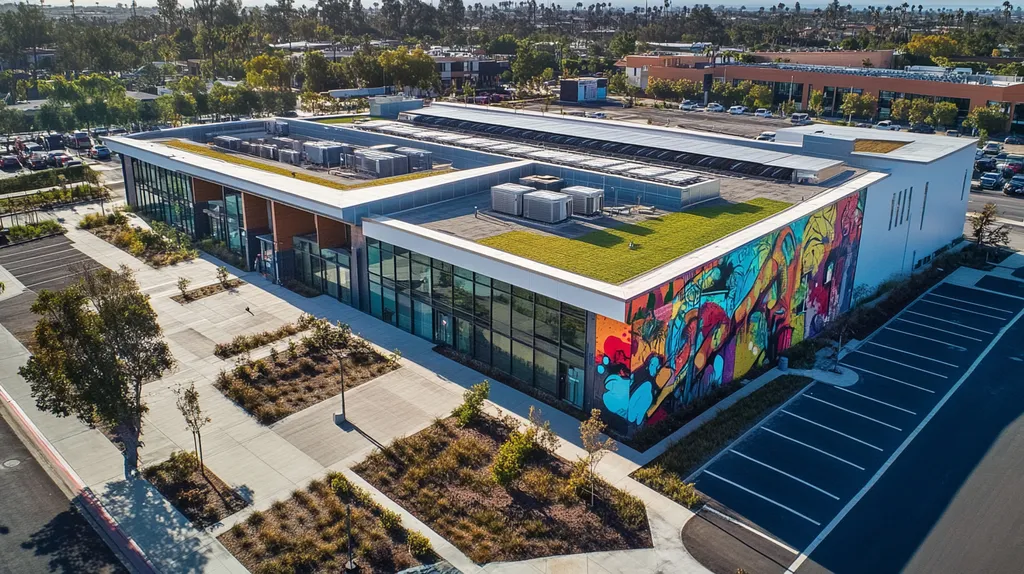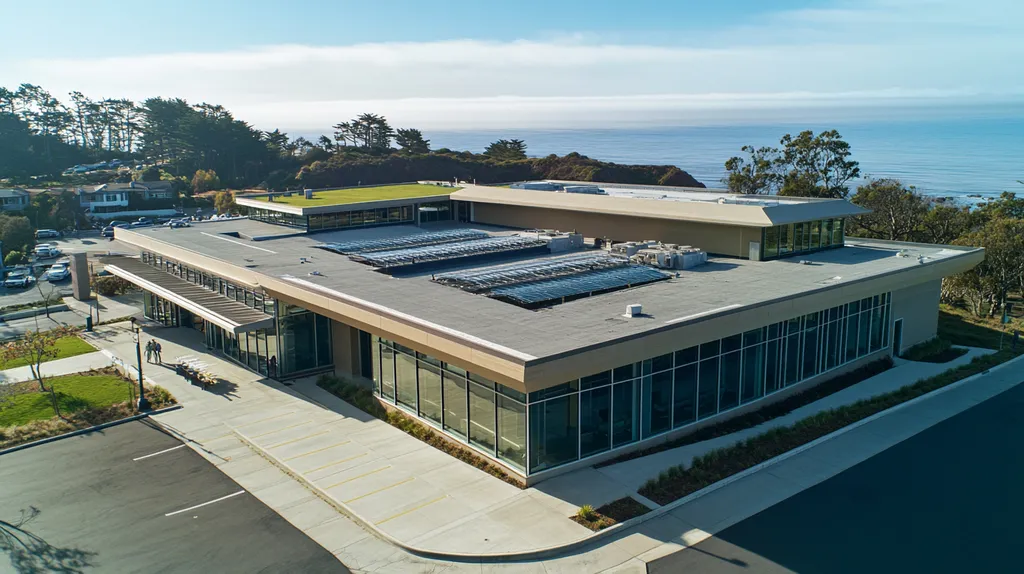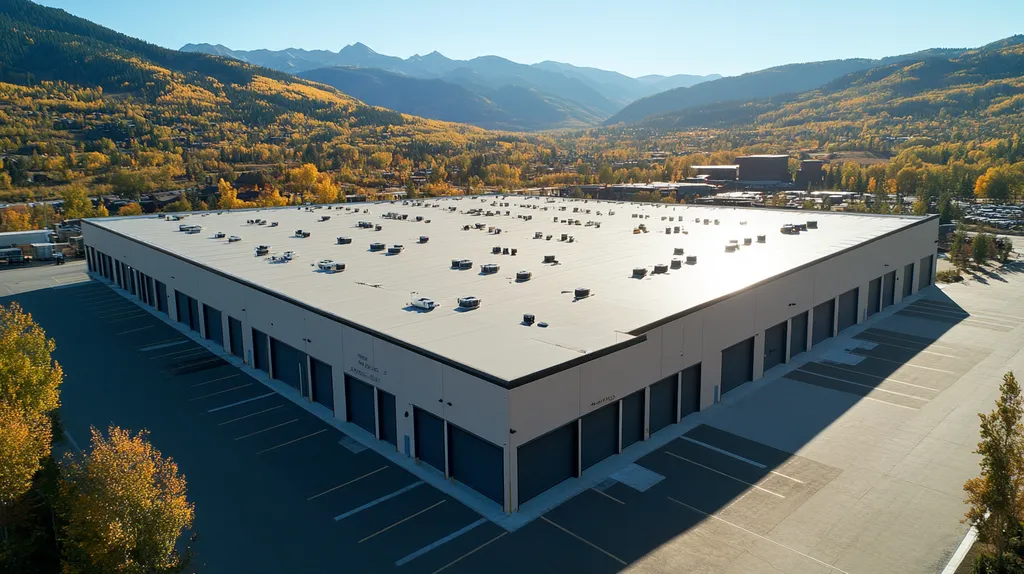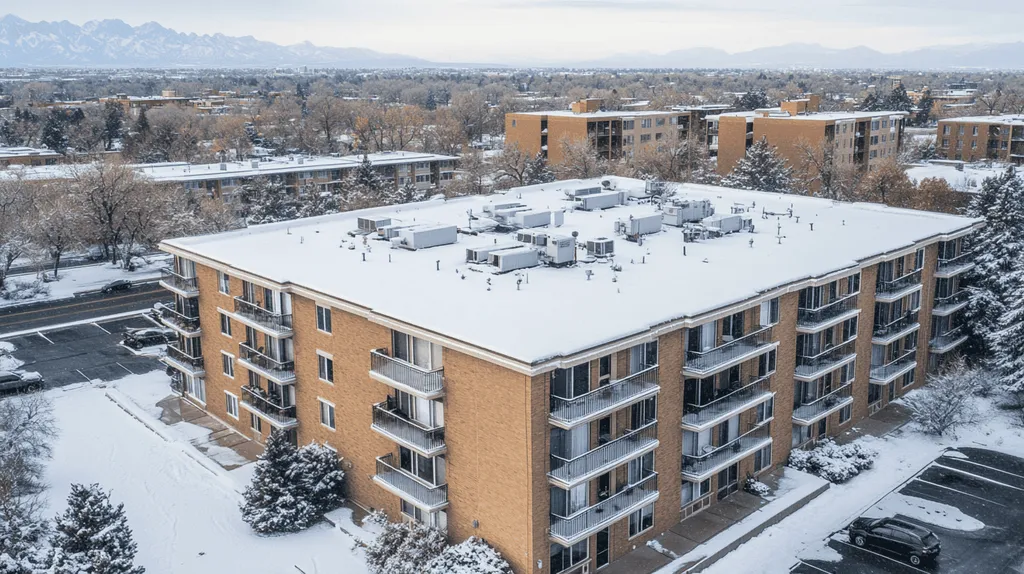Welcome to today’s Battle Royale featuring two roofing heavyweights: “Deck Sealants” in the east corner versus “Flashing Systems” in the west!
Tonight’s showdown pits these contenders against each other across six punishing rounds designed to test every aspect of their performance for Watertight Commercial Roof Penetrations.
At stake? Millions in potential costs, decades of building protection, and the critical performance demands of modern commercial and industrial facilities.
Our professional judging panel will evaluate each round on technical merit, real-world performance, and value delivery. After all six rounds, we’ll declare our ultimate champion.
Ladies and gentlemen, facility managers and building owners… it’s time to rumble!
ROUND 1: INITIAL COSTS & INSTALLATION
Proper sealing of roof penetrations represents one of the most critical aspects of commercial roofing, with even small failures potentially leading to catastrophic water damage. Industry data shows that up to 90% of roof leaks occur at penetrations, making the choice between deck sealants and flashing systems a decision with significant financial implications.
Material Expenses
The initial cost difference between deck sealants and flashing systems can be substantial, with sealants typically costing 40-60% less in materials alone. This price gap often drives decision-makers toward sealants, especially in projects with multiple penetrations.
Penetrations through single-ply roof membranes can be sealed using either field-fabricated flashings or prefabricated accessories, with prefabricated options reducing inconsistency risks and installation errors. (source: GAF)
While deck sealants offer lower upfront costs, flashing systems provide superior material quality and standardization. Their engineered components ensure consistent performance across all penetrations.
When considering material expenses alone, deck sealants hold the ADVANTAGE due to significantly lower initial costs.
Installation Complexity
Installation complexity directly impacts labor costs and project success rates. Deck sealants require minimal training and can be applied quickly, often needing only basic tools and preparation.
Flashing systems demand precise installation techniques, including proper mechanical attachment and specific sealing procedures. The complexity increases with irregular penetrations or challenging roof configurations.
However, flashing systems’ standardized installation processes reduce human error and provide more reliable outcomes. Their component-based approach ensures consistent quality across different installers.
Despite higher skill requirements, flashing systems earn the ADVANTAGE through superior quality control and reduced installation variables.
Project Timeline
Project timelines significantly impact operational costs and tenant satisfaction. Deck sealants can be installed rapidly, often completing multiple penetrations in a single day.
Flashing systems require more extensive preparation and installation time. Each penetration must be carefully measured, fitted, and sealed according to manufacturer specifications.
The speed advantage of deck sealants can reduce facility disruption and allow faster project completion. This timeline efficiency translates directly to cost savings in labor and operational downtime.
For timeline considerations, deck sealants claim the ADVANTAGE through faster installation and reduced facility disruption.
ROUND 1 WINNER: TIE
ROUND 2: DURABILITY & LIFESPAN
Roof penetrations represent critical vulnerability points in commercial roofing systems, with industry data showing that 85% of premature roof failures occur at these locations. The choice between deck sealants and flashing systems directly impacts a facility’s maintenance costs, energy efficiency, and potential for water damage over time.
Weather Resistance
Commercial roof penetrations must withstand extreme temperature fluctuations, UV exposure, and precipitation. These environmental factors continuously test the integrity of penetration sealing solutions.
Deck sealants offer initial flexibility and conform well to irregular shapes. However, their chemical composition makes them susceptible to UV degradation and thermal stress, often leading to cracking or separation within 3-5 years.
Flashing systems utilize materials specifically engineered for long-term weather exposure. Their rigid construction and mechanical attachment methods create a more stable barrier against environmental factors.
For weather resistance, flashing systems claim the ADVANTAGE through superior material stability and proven long-term performance.
Maintenance Requirements
Regular maintenance significantly impacts the total cost of ownership for any roofing system. The frequency and complexity of required maintenance varies considerably between penetration protection methods.
Deck sealants require frequent inspections and often need reapplication every 2-3 years. Their vulnerability to environmental factors means maintenance staff must regularly check for signs of degradation or failure.
Flashing systems typically need only annual inspections and rarely require replacement when properly installed. Their durable construction and mechanical attachment reduce the likelihood of failure points developing over time.
For maintenance considerations, flashing systems earn the ADVANTAGE through reduced maintenance frequency and lower long-term labor costs.
Service Life
The expected service life of penetration protection directly affects facility budgeting and maintenance planning. Short-term solutions often lead to higher cumulative costs.
Deck sealants generally provide 5-7 years of service under optimal conditions. However, their performance can degrade significantly faster in regions with extreme weather or on roofs with high foot traffic.
Flashing systems routinely deliver 15-20 years of reliable service, matching or exceeding the lifespan of the roofing membrane itself. Their engineered design and superior materials provide consistent protection throughout the roof’s service life.
For service life expectations, flashing systems secure the ADVANTAGE through substantially longer performance periods.
ROUND 2 WINNER: Flashing Systems
ROUND 3: PERFORMANCE FACTORS
Commercial roof penetrations represent critical vulnerabilities that demand reliable sealing solutions. Industry data shows that over 60% of premature roof failures originate at improperly sealed penetrations, making the selection of an appropriate sealing method essential for long-term building protection.
Water Resistance Capability
A successful watertight seal requires penetrations to meet strict guidelines for soundness and stability. Different sealing methods offer varying levels of protection against water intrusion, with some providing more reliable barriers than others.
Deck sealants create an immediate waterproof barrier by conforming to irregular shapes and filling gaps. However, their effectiveness can diminish as the material ages and separates from the substrate, particularly around dynamic penetrations that experience movement.
Flashing systems provide structured water management through engineered components and mechanical attachment. Their rigid construction and overlapping design principles create multiple barriers against water intrusion, effectively channeling moisture away from vulnerable points. (source: Building Enclosure Online)
For water resistance capability, flashing systems claim the ADVANTAGE through superior moisture control and proven barrier protection.
Thermal Performance
Temperature fluctuations cause roofing materials to expand and contract, creating stress on penetration seals. The ability to maintain watertight integrity during these cycles directly impacts system longevity.
Deck sealants initially accommodate thermal movement well but can become brittle or lose adhesion over time. This degradation accelerates in climates with extreme temperature swings, potentially compromising the seal’s effectiveness.
Flashing systems incorporate expansion joints and flexible components designed specifically for thermal cycling. Their engineered design accounts for material movement while maintaining consistent protection against water intrusion.
For thermal performance, flashing systems secure the ADVANTAGE through superior thermal stability and movement accommodation.
Chemical Compatibility
Modern roofing systems utilize diverse materials that must work together without degrading each other. Chemical compatibility between penetration seals and surrounding components is crucial for maintaining system integrity.
Deck sealants can react adversely with certain roofing materials, particularly single-ply membranes. These interactions may lead to premature deterioration of either the sealant or the roof membrane.
Flashing systems typically use inert materials specifically designed for compatibility with common roofing components. Their standardized construction eliminates concerns about chemical reactions while ensuring consistent performance.
For chemical compatibility, flashing systems earn the ADVANTAGE through superior material compatibility and reduced interaction risks.
ROUND 3 WINNER: FLASHING SYSTEMS
ROUND 4: MAINTENANCE REQUIREMENTS
Commercial roof penetrations represent critical vulnerability points that demand consistent maintenance attention. Industry statistics show that poorly maintained penetrations account for over 40% of premature roof failures, leading to millions in annual repair costs across the commercial sector.
The maintenance requirements for different penetration protection methods can significantly impact both short-term facility operations and long-term building protection strategies. Understanding these requirements helps facility managers make informed decisions about resource allocation.
Inspection Frequency
Regular inspection schedules form the foundation of effective penetration maintenance. The frequency and complexity of these inspections directly impact facility maintenance budgets and staff resources.
Deck sealants require quarterly inspections to identify early signs of degradation, separation, or UV damage. These frequent checks strain maintenance resources but are essential to prevent sudden failures that could compromise the entire roofing system.
Flashing systems typically need only semi-annual inspections due to their robust construction and mechanical attachment methods. Their engineered design allows for easier visual confirmation of system integrity while reducing the time required for thorough evaluation.
For inspection requirements, flashing systems claim the ADVANTAGE through reduced frequency and simplified assessment protocols.
Repair Complexity
The complexity of necessary repairs significantly impacts maintenance costs and facility disruption. Simple repairs can often be handled by in-house staff, while complex issues require specialized contractors.
Deck sealant repairs generally involve straightforward reapplication procedures. However, these repairs must be performed more frequently and require careful surface preparation to ensure proper adhesion.
Flashing system repairs typically involve replacing standardized components rather than applying new materials. While individual repairs may be more involved, they occur less frequently and provide more predictable outcomes.
For repair complexity, deck sealants earn the ADVANTAGE through simpler repair procedures and lower skill requirements.
Long-term Maintenance Planning
Strategic maintenance planning helps facilities optimize resources while ensuring consistent protection. Different penetration solutions require varying approaches to long-term care.
Deck sealants demand continuous monitoring and frequent intervention cycles. Their maintenance requirements increase over time as materials age and environmental exposure takes its toll.
Flashing systems support more predictable maintenance schedules with longer intervals between interventions. Their durable construction and standardized components allow for more efficient resource allocation and simplified budget forecasting.
For long-term planning considerations, flashing systems secure the ADVANTAGE through more predictable maintenance cycles and reduced resource demands.
ROUND 4 WINNER: FLASHING SYSTEMS
ROUND 5: SUSTAINABILITY CREDENTIALS
Environmental impact considerations have become critical factors in commercial roofing decisions, with penetration solutions significantly affecting a building’s overall sustainability profile. The roofing industry contributes over 13 million tons of waste to landfills annually, making the environmental credentials of penetration protection methods increasingly important for regulatory compliance and corporate sustainability goals.
Material Lifecycle Impact
The environmental impact of penetration protection starts with raw material sourcing and extends through disposal. Modern commercial facilities must consider the complete lifecycle implications of their roofing choices.
Deck sealants typically contain petrochemical compounds that require energy-intensive manufacturing processes. While some newer formulations incorporate recycled materials, most sealants cannot be effectively recycled at end-of-life.
Flashing systems often utilize recyclable metals and polymers that can be reclaimed and repurposed. Their longer service life reduces the frequency of replacement and associated waste generation.
For material lifecycle considerations, flashing systems claim the ADVANTAGE through superior recyclability and reduced replacement frequency.
Installation Waste
Installation processes can generate significant waste, impacting both environmental sustainability and disposal costs. Smart material selection and installation methods can dramatically reduce this waste stream.
Deck sealants produce minimal waste during installation, as materials can be precisely measured and applied. Their application equipment is typically reusable, further reducing environmental impact.
Flashing systems often generate more installation waste through cutting and fitting processes. While some components can be recycled, the custom fabrication process inherently creates more material waste.
For installation waste considerations, deck sealants earn the ADVANTAGE through minimal material waste and efficient application methods.
Energy Efficiency
Penetration protection methods directly impact a building’s thermal performance and energy consumption. Proper sealing can significantly reduce heating and cooling losses through the roof assembly.
Deck sealants provide consistent thermal barriers when properly maintained but can develop gaps as they age. Their degradation over time can lead to increased energy losses through penetration points.
Flashing systems maintain stable thermal performance throughout their service life. Their rigid construction and mechanical attachment methods create more reliable long-term thermal barriers.
For energy efficiency considerations, flashing systems secure the ADVANTAGE through superior long-term thermal performance.
ROUND 5 WINNER: Flashing Systems
ROUND 6: SPECIALIZED APPLICATIONS
Commercial roof penetrations present unique challenges in specialized applications, where failure rates can exceed 70% without proper protection methods. From industrial exhaust systems to complex HVAC installations, these critical points demand solutions that can adapt to diverse requirements while maintaining long-term integrity.
Unique Structures and Configurations
Complex roof designs and irregular penetrations require sealing solutions that can accommodate non-standard shapes and sizes. These challenging configurations often include multiple penetrations in close proximity or penetrations at unusual angles.
Deck sealants excel in conforming to irregular shapes and filling complex voids. Their flexible nature allows them to create complete seals around oddly shaped penetrations while accommodating minor structural movement.
Flashing systems offer standardized solutions that may require modifications for unique configurations. While they provide superior long-term protection, their rigid components can be challenging to adapt to non-standard penetrations.
For unique structures and configurations, deck sealants claim the ADVANTAGE through superior adaptability to irregular shapes.
Environmental Considerations
Specialized applications often expose penetrations to harsh environmental conditions, including chemical exposure, extreme temperatures, and constant moisture. These challenging environments accelerate deterioration and increase failure risks.
Deck sealants show vulnerability to chemical exposure and extreme conditions, often requiring frequent replacement or reapplication. Their performance can degrade rapidly when exposed to industrial emissions or harsh cleaning agents.
Flashing systems maintain their integrity under severe environmental stress through engineered materials and mechanical attachments. Their chemical-resistant components and standardized construction provide reliable protection even in aggressive industrial environments.
For environmental considerations, flashing systems secure the ADVANTAGE through superior resistance to harsh conditions.
Adaptability to Repairs and Upgrades
Specialized applications frequently require system modifications or equipment upgrades that impact existing penetration seals. The ability to adapt protection methods during these changes significantly affects maintenance efficiency and cost.
Deck sealants provide simple repair options and can be easily modified to accommodate equipment changes. Their application flexibility allows for quick adjustments without extensive system disruption.
Flashing systems require more complex modification procedures when equipment changes occur. While their components offer superior protection, alterations often involve complete removal and replacement of existing flashings.
For adaptability to repairs and upgrades, deck sealants earn the ADVANTAGE through simpler modification procedures.
ROUND 6 WINNER: TIE
AND THE WINNER IS…
After six grueling rounds of technical analysis, with victories determined by cold, hard performance data, we have our undisputed champion!
Rising victorious with commanding wins in Rounds 2, 3, 4, and 5, FLASHING SYSTEMS claims the championship belt in this heavyweight battle for watertight supremacy!
The champion dominated through superior durability, consistent performance, predictable maintenance requirements, and impressive sustainability credentials. Most notably, flashing systems’ 15-20 year service life and engineered water management capabilities delivered knockout blows to the competition.
Yet don’t count deck sealants out completely! In specialized applications requiring rapid deployment or irregular penetration shapes, this scrappy contender still packs a powerful punch. Its lower initial costs and installation flexibility make it a strong contender for specific scenarios.
IMPORTANT NOTICE: Every facility faces unique challenges based on local climate, building design, and operational requirements. While this analysis reflects typical industry outcomes, individual results may vary. Professional roofing contractors should evaluate your specific situation before making final recommendations.
Ladies and gentlemen, in the high-stakes world of commercial roofing, remember: True victory comes not from blindly following the champion, but from strategically matching your facility’s specific needs to the right penetration protection contender. Now, let’s get ready for the next round of building protection excellence!
FREQUENTLY ASKED QUESTIONS
Q. What are the initial costs of commercial roof options?
A. The costs vary significantly between deck sealants and flashing systems. Deck sealants generally have lower material costs, often 40-60% less, making them appealing for budget-conscious projects. However, flashing systems, while more expensive, provide better long-term performance and consistency.
Q. How do the durability and lifespan of commercial roof solutions compare?
A. When assessing durability, flashing systems generally outlast deck sealants, providing up to 20 years of protection versus the 5-7 years of service life for sealants. The difference in longevity impacts overall maintenance costs and budget planning significantly.
Q. Which commercial roof system performs better under adverse conditions?
A. Flashing systems are engineered to withstand harsh environmental factors effectively, offering significant water resistance and thermal performance advantages. In contrast, deck sealants may degrade under extreme conditions, leading to potential water intrusion and increased maintenance needs.
Q. How often should I inspect commercial roof penetrations?
A. Deck sealants typically require quarterly inspections due to their vulnerability to damage. In contrast, flashing systems usually only need semi-annual inspections, providing a more efficient and less labor-intensive approach for maintenance budgets.
Q. What are the sustainability considerations for commercial roofing?
A. Sustainability is a crucial factor as flashing systems often use recyclable materials and have longer life spans, reducing waste. Conversely, while deck sealants have lower installation waste, they typically require more frequent replacements, leading to higher environmental impact over time.
Q. How do unique structures affect commercial roof sealing choices?
A. Unique or irregular roof penetrations often favor deck sealants due to their flexibility and ability to conform easily to various shapes. Flashing systems can be more rigid, which may require modifications to fit special conditions, but they provide superior long-term protection.
Q. What makes flashing systems more reliable than deck sealants long-term?
A. Flashing systems typically utilize engineered materials and mechanical attachment methods that enhance their durability and resistance to environmental factors. This construction method results in a more stable barrier against water intrusion, significantly increasing long-term reliability compared to deck sealants.

